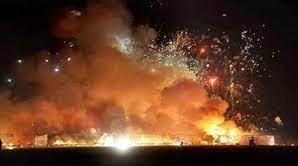
Delhi's Struggle with Vehicular Pollution: Despite Measures, Crisis Deepens Amid Rising Motorisation
Delhi, India's bustling capital, continues to grapple with escalating pollution levels from vehicles, which have emerged as the primary contributors to the city’s poor air quality. Despite implementing advanced pollution-control measures, vehicular emissions remain dominant, spurred by rapid motorization, severe congestion, and a lack of effective public transportation options, according to a recent analysis by the Centre for Science and Environment (CSE).
Pollution Measures in Place, Yet Emissions Soar
Delhi has implemented a range of initiatives to control emissions, including the world’s largest CNG program, restrictions on older diesel and petrol vehicles, Bharat Stage 6 standards, and the introduction of electric vehicles. These measures, however, are being undermined by an “explosive growth” in private vehicle numbers, according to the CSE report, as the city faces an ongoing mobility crisis.
The report highlights that vehicles remain the top source of particulate matter (PM2.5) pollution in Delhi. While pollution spikes tend to vary with atmospheric conditions, average levels of PM2.5 during winter months have reached alarming heights. The winter PM2.5 average for 2023-24 stands at 189 µg/m3—Delhi’s highest in the past five years. This concerning trend signals the urgent need for more effective interventions.
Congestion Compounds Pollution Challenges
CSE’s findings underscore that high congestion levels further exacerbate vehicular pollution. Traffic speeds in Delhi, particularly during peak hours, correlate strongly with a rise in nitrogen dioxide (NO2) levels. During the recent festive season, the congestion issue was amplified, with speeds on major roads decreasing by 40.8% during morning peaks and 57.9% during evening peaks, contributing to a significant rise in pollution.
Motorisation and Urban Expansion: A Recipe for Rising Emissions
Delhi’s rapid urban expansion and increased commute distances have intensified the reliance on private vehicles, thereby undercutting public transportation options. According to the Economic Survey of 2023-24, Delhi now has 79 lakh registered vehicles, with an additional 6.5 lakh vehicles added over the past year. On an average day, about 1,100 two-wheelers and 500 private cars hit Delhi’s roads, further straining air quality and mobility.
“Explosive motorization and the expansion of urban areas into peripheral regions have dramatically increased travel volumes,” the report states, “resulting in longer commutes and rising demand for private vehicles over public transport.”
Public Transport Struggles to Keep Pace
Despite a Supreme Court directive in 1998 to deploy 10,000 buses, Delhi has only managed to put 7,683 on its roads, including 1,970 electric buses as of July 2024. Although a procurement of 4,000 buses is underway, the current fleet remains inadequate for a city of Delhi’s size. According to CSE’s assessment, Delhi has only 45 buses per lakh of population, falling short of the Ministry of Housing and Urban Affairs' benchmark of 60 buses per lakh. Global cities like London and Hong Kong maintain ratios of 90 and 80 buses per lakh population, respectively, providing valuable benchmarks for Delhi’s future plans.
The Cost of Congestion: More than Just Delays
The implications of congestion in Delhi extend beyond pollution. Economic analyses suggest that fuel wastage due to traffic could cost the city millions. Moreover, productivity losses due to delays are substantial, with unskilled and skilled workers estimated to lose between Rs 7,500 and Rs 26,600 annually.
Furthermore, a comparative analysis of public and private journey costs revealed that private vehicles often have lower fuel costs. However, public transit journeys incur additional time expenses due to waiting times and transfers, making it difficult for public transport to compete with private options.
Increased Reliance on Private Vehicles
Delhi’s reliance on private vehicles has grown sharply over the past decade. Data shows a shift from a 38% to a 49% share of private vehicle use, accompanied by a 20% decrease in bus ridership. CSE’s report argues that to meet the Delhi Master Plan’s goal of achieving an 80:20 split in favor of public transport by 2041, a 1% yearly increase in public transit usage is essential, alongside a corresponding decrease in private vehicle reliance.
Future of Pollution Control: Scaling Solutions Needed
While recent measures have made some impact, the report stresses that “solutions are not being built to scale.” It calls for urgent investment in public transit and traffic management solutions to reduce the city’s pollution levels. Enhanced infrastructure, better enforcement of pollution standards, and an increase in public transit options could collectively address Delhi’s mounting pollution crisis.
For Delhi to attain clean air benchmarks and sustainable mobility, scaling up public transport and implementing measures to manage vehicle growth are critical. The CSE report’s findings underscore that tackling vehicular pollution is key to addressing the city’s overall air quality woes, ensuring a healthier future for its citizens.